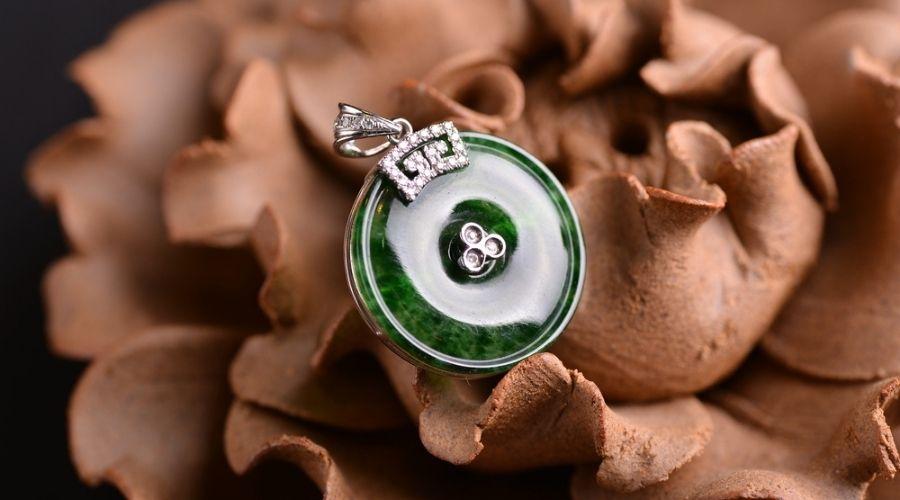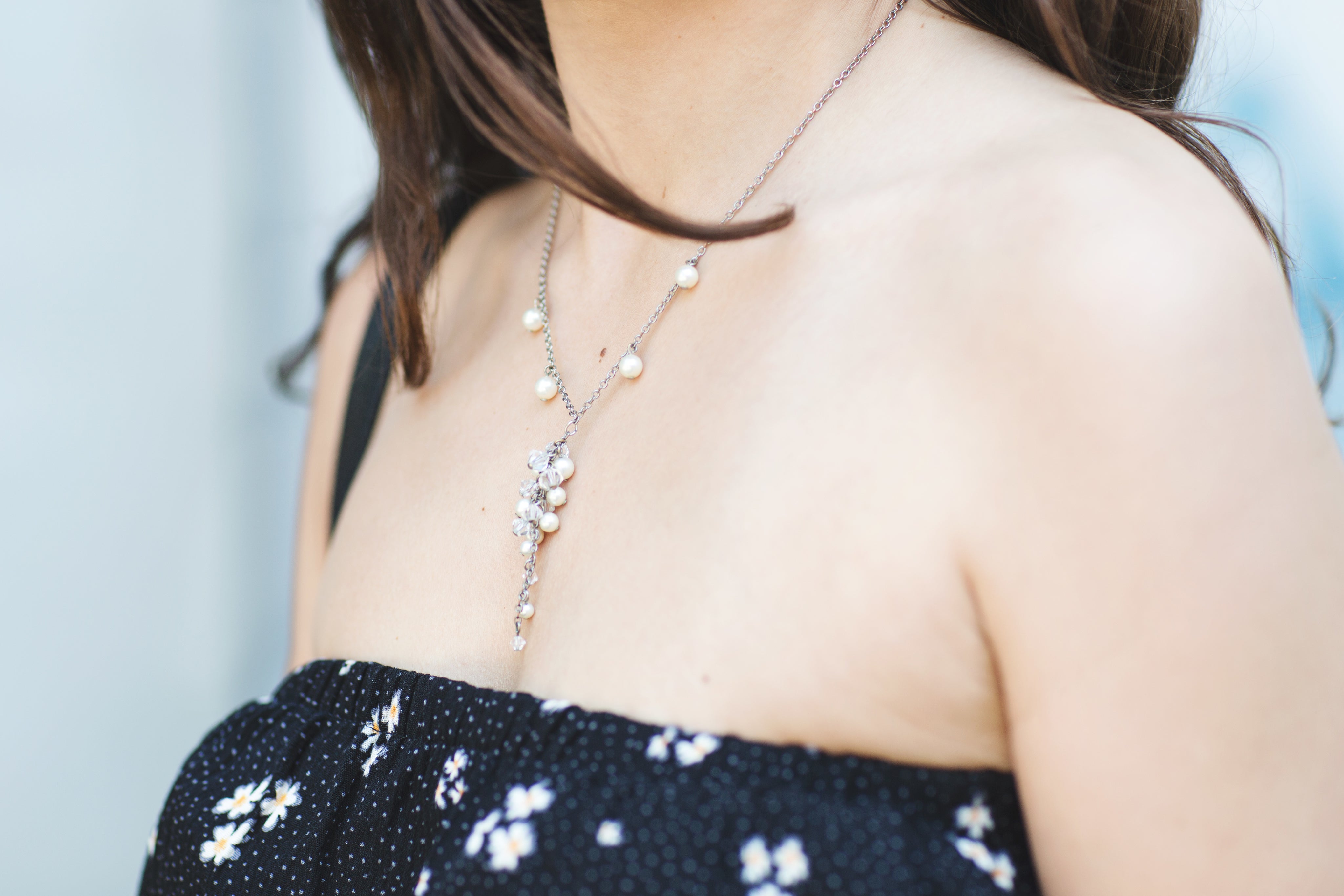
Anything can be imitated these days, from gold to diamonds. That is why it is necessary to know what your favorite precious stones look like when they are 100% genuine.
Looks can be deceiving, but it’s rare for something to be faked to perfection.
To ensure you never get cheated, learn how to tell if jade is real. Below, we outline how to look beyond that beautiful, shiny green surface and figure out if you have an authentic piece.
Nephrite and Jadeite - The Two Types of Jade
Jade comes in two distinct forms: jadeite and nephrite. Although both these stones are called jade, they have many differences in chemical composition and crystalline structure.
Jadeite is a silicate compound of sodium and aluminum and is considered pyroxene. Nephrite is a silicate compound of calcium and magnesium and is considered amphibole.
Jadeite is less common than nephrite, mainly obtained from northern Myanmar. It is also has a higher Mohs hardness rating and is denser than nephrite. Jadeite comes in a broader range of colors than nephrite which only comes in green, white, and yellow.
However, jadeite mainly has varying shades of green that range between apple-green and emerald. Jadeite’s luster appears more oily, while nephrite luster is vitreous or glassy.
Since nephrite is more common, it is more affordable. Jadeite is harder to get and more expensive, making it more susceptible to being faked.
Tests To Check If Your Jade Is the Real Thing
Now that we know the two main types of jade, here is how you can tell if those pieces are authentic.
Check For Irregularities

Genuine nephrite and jadeite will have fibrous, granular, or felt-like marks intertwining within their structure. You can view these marks by holding up the jade stone to bright light. A 10x loupe makes seeing them even easier.
The most common compound used to imitate jade is called chrysoprase, and it is microcrystalline. Chrysoprase’s microcrystalline structure means it will not have these marks.
As you observe the stone using a 10x loupe, look out for layers. Any layering is an indication that the jade has been doubled. Doubling is when a manufacturer places a thin layer of genuine jade over a different base.
Genuine jade or nephrite should only have felt-like marks; a homogenous appearance and any layers indicate fake jade.
You may be wondering whether the marks are replicable, but it is difficult. Even if the seller manages to do it, the other factors that distinguish genuine jade from imitation jade will expose their trick.
Check for Flaws
Most times, imperfections in gemstones are considered a disadvantage. However, when it comes to jade, flaws add value. Vein-like fibers, as we had discussed earlier, are an indication that the jade is genuine.
One flaw that you don’t want to see is bubbles. Once again, these are detected using a loupe.
You may offend some sellers by examining their jewelry too closely. However, if the retailer is too aggressive about you inspecting their jade, be cautious. It may be that they’re trying to hide something.
Density Check
Both jadeite and nephrite have a relatively high density. Jadeite’s density is around 3.0, while nephrite’s density is about 3.3. Density is the amount of mass per unit of volume a substance has.
The first method you use to check density is tossing the stone in the air and catching it. The stone should feel heavier than other stones of its size.
The second method will require you to have a piece of jade that you know is real. Tap the genuine jade against the jade you are testing. If it sounds like two plastic beads tapping against each other, the other piece of jade is probably fake.
If you can accurately measure the mass and volume using the appropriate tools, that would be preferable. However, this is impossible when you are at a retailer's shop.
The Scratch Test

Jadeite is a hard stone; it will scratch glass and most metals. If you use any of these substances to scratch the surface of pure jadeite, there should not be any scratches. There may be a white line, but it should be easy to wipe off.
Nephrite is not as hard as jadeite, so if the stone you are testing is nephrite, then you may end up damaging it.
Be careful when performing this test. Even if a stone turns out to be imitation jade, it may still be precious. For example, you may end up damaging green quartz or prehnite.
If you choose to use the scratch test, only do it on a piece you already own. Be sure to perform the scratch test on a section of the stone that is not easily visible.
Check the Temp
When held, genuine jade should feel cold and soap-like to the touch. A real piece of jade should take some time to warm in your palm.
This test is not entirely accurate because it is subjective. What is cold to one person, maybe warm to another.
One way to make this test more accurate is to compare it to genuine jade of a similar shape and size. It’s best to do this at the same time, with one piece in each hand.
Testing the Sound
As with the other tests, the sound test is better if you have a real piece of jade with you. Tap the jade you are testing against genuine jade. You should hear a clinking, bell-like sound. It makes this sound because it is denser than most gemstones of equivalent size.
If you tap real jade on glass, it should have a heavier, bell-like chime. Many other gems will produce a hollow sound. If the jade stone you are testing makes these sounds, then it is probably fake.
Things to Look out For

Although you may have real jade, it may have gone through several treatments such as:
- Dying
- Bleaching
- Stabilizing by use of polymers
- Doubling and tripling
Based on these treatments, we have three categories of jade:
Type A
This type of jade:
- Is natural and untreated
- Undergoes traditional processes, such as plum juice washing and beeswax polishing
- Retains its true color
Type B
Type B jade is characterized by:
- Bleached out impurities
- Enhanced translucency
- Plastic-like coating
- Instability and easy discoloration
- 100% jade with natural color
Type C
Finally, Type C jade is:
- Chemically bleached
- Dyed to enhance color
- Easily discolored over time
Stones that Look like Jade
Jade is a beautiful and valuable gemstone, but several stones mimic its look. That doesn’t necessarily mean that these pieces aren’t valuable. Here are a few green gems that look like jade.
Aventurine

Aventurine is so like jade that it is also known as Indian or Australian jade. It is not jade at all, though. Instead, it is a type of quartz from a different mineral family.
Some sellers will use the name Australian or Indian jade to confuse buyers.
Greenstone

Known as Pounamu by the first people who saw it in New Zealand, the Māori, this stone is called nephrite jade. It was renamed when European explorers came. Although it would be easier to call it Pounamu or Nephrite, the name greenstone has endured.
Serpentine

This refers to a group of stones that look a lot like jade. However, it has a waxy luster when serpentine is polished instead of a glassy or oily luster. Serpentine is also not as smooth as jade.




Leave a comment